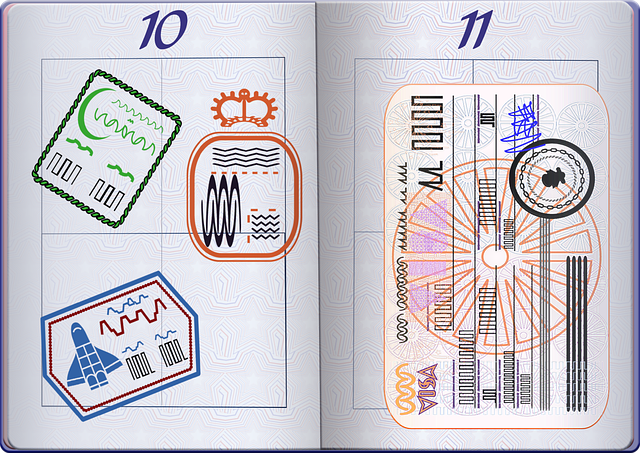How To Write A Letter of Sponsorship For Student Visa

A letter of sponsorship for a visa is a crucial document required by many countries for those seeking entry into their borders. The letter serves as evidence that the applicant will not become a burden on the country’s resources and has sufficient financial support during their stay.
This guide aims to provide a step-by-step process to help simplify the process and ensure a successful visa application for Nepalese students. Read on to learn how to write a convincing letter of sponsorship for your visa.
Understanding Visa Requirements for Nepali Students
It’s essential to understand the specific requirements for Nepali students. Different types of visas are available, including student visas, tourist visas, and work visas, each with its requirements.
To avoid confusion, it’s important to research and understand the requirements for a student visa before applying (these requirements may vary per country).
In addition to other required documents, Nepali students applying for a visa often need a letter of sponsorship. The letter of sponsorship for Nepali students should include the following:
- Sponsor’s personal information, such as their name, address, and contact details.
- Financial details should also be included in the letter, such as the sponsor’s income, assets, and liabilities.
- The letter should also state the purpose of the student’s visit and provide details on the duration of the stay.
- The sponsor should indicate their willingness to support the student financially throughout their stay in the destination country.
- In most cases, the sponsor should also provide evidence of their financial capability to support the student.
Understanding these specific requirements for a letter of sponsorship for Nepali students can help make the visa application process less stressful and ensure a greater chance of success.
Gather Relevant Information
To write a convincing letter of sponsorship for a visa, it’s crucial to gather all relevant information beforehand. This includes personal information and financial details of the sponsor, as well as information about the student and their visit.
Personal information of the sponsor should include their name, address, contact details, and relationship with the student.
Financial details should include the sponsor’s income, assets, and liabilities. If applicable, evidence of the sponsor’s financial capability to support the student should also be included.
When gathering the necessary information, it’s important to ensure that all documents are up-to-date and accurate. Double-checking the information provided can help avoid any mistakes or discrepancies that could delay the visa application process.
By gathering all relevant information and documents, applicants can write a comprehensive letter of sponsorship that increases the chances of a successful visa application.
How to Write a Letter of Sponsorship for Visa
When writing a letter of sponsorship for a visa, it’s important to follow a specific format and use persuasive language.
The following step-by-step guide can help create a convincing letter:
- Start with a formal greeting and introduce yourself as the sponsor.
- Explain your relationship with the student and provide their personal information and purpose of visit.
- Include financial details, such as your income, assets, and liabilities. State your willingness to support the student financially during their stay.
- Provide evidence of your financial capability to support the student, such as bank statements or tax returns.
- End the letter with a formal closing statement, such as “Sincerely” or “Yours faithfully.”
By following these guidelines and writing a well-crafted letter of sponsorship, applicants can increase their chances of a successful visa application.
Additional Tips and Reminders For Acquiring Letter of Sponsorship
Writing a letter of sponsorship for a visa can be tricky sometimes, but keeping in mind a few additional tips and reminders can help make the process smoother. It’s essential to address common concerns and pitfalls to avoid, such as overstating financial capabilities or providing false information.
One of the most important things to keep in mind is to be honest and transparent in the letter. Providing false information can not only lead to a rejected visa application but can also have legal consequences.
It’s crucial to provide accurate financial information and evidence of financial capability to support the student during their stay.
Another essential tip is to ensure that the letter is written in a clear and concise manner. Avoid using technical jargon or language that is difficult to understand. The letter should be easy to read and convey the necessary information effectively.
Finally, it’s important to proofread the letter thoroughly for errors and inconsistencies. A well-crafted letter of sponsorship can make a significant difference in the success of a visa application, so taking the time to ensure it is well-written, honest, and transparent is critical.
How To Write A Letter of Sponsorship- Conclusion
Following the steps outlined in this guide can make the visa sponsorship letter writing process more manageable. We’ve covered the essential requirements and tips for creating a convincing letter of sponsorship, including gathering the necessary information, following a specific format, and being honest and transparent.
For Nepali students seeking a visa, it’s important to be patient, thorough, and honest in the application process. Remember to provide accurate and complete information and present a persuasive case for your visit.
With perseverance and a well-crafted letter of sponsorship, you can increase your chances of obtaining a visa and pursuing your academic or professional goals abroad.
Frequently Asked Questions
Who can be a sponsor for a student visa?
A sponsor can be a parent, legal guardian, or any other individual or organization willing and able to provide financial support to the student. The sponsor should generally be able to demonstrate stable and sufficient financial resources to cover the student's expenses during their course of study.
How is a Letter of Sponsorship structured?
A Letter of Sponsorship typically includes the following:
Sponsor’s personal details like name, address, contact information, and relationship to the student.
Student’s personal details like name, date of birth, and course of study.
Details of the sponsor’s financial commitment, including tuition, living expenses, travel, etc.
Duration of sponsorship.
A statement of the sponsor’s ability to support, typically supported by bank statements or income proofs.
A closing statement with the sponsor’s signature.
Is the Letter of Sponsorship mandatory for every student visa application?
Requirements can vary depending on the country and the specific visa category, but many countries do require proof of financial ability, which can be demonstrated through a Letter of Sponsorship, especially when the applicant is unable to show sufficient personal funds.
Can an organization or institution act as a sponsor?
Yes, organizations, institutions, or even governments can act as sponsors, and they can provide a Letter of Sponsorship to support a student’s visa application.
What financial documents are needed to support the Letter of Sponsorship?
The sponsor typically needs to provide financial documents such as bank statements, pay slips, employment letters, tax returns, or any other proof of income to validate the sponsorship letter.
How is the sponsor’s financial ability assessed?
The sponsor’s financial ability is generally assessed by reviewing the provided financial documents and evaluating whether the sponsor has sufficient stable income or savings to cover the student’s projected expenses throughout the study period.
Can a sponsor support more than one student at a time?
Yes, a sponsor can support more than one student at a time as long as they can demonstrate the financial capability to support each student adequately. Each student’s visa application must include a separate Letter of Sponsorship detailing the support for that specific student.



